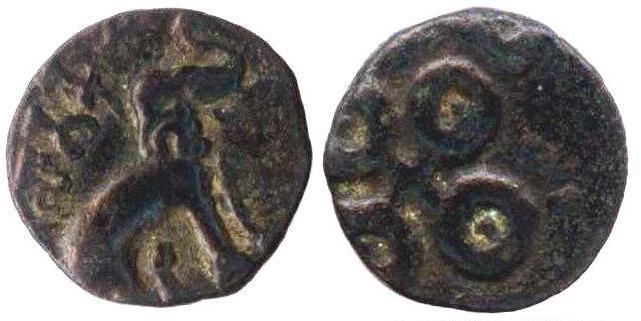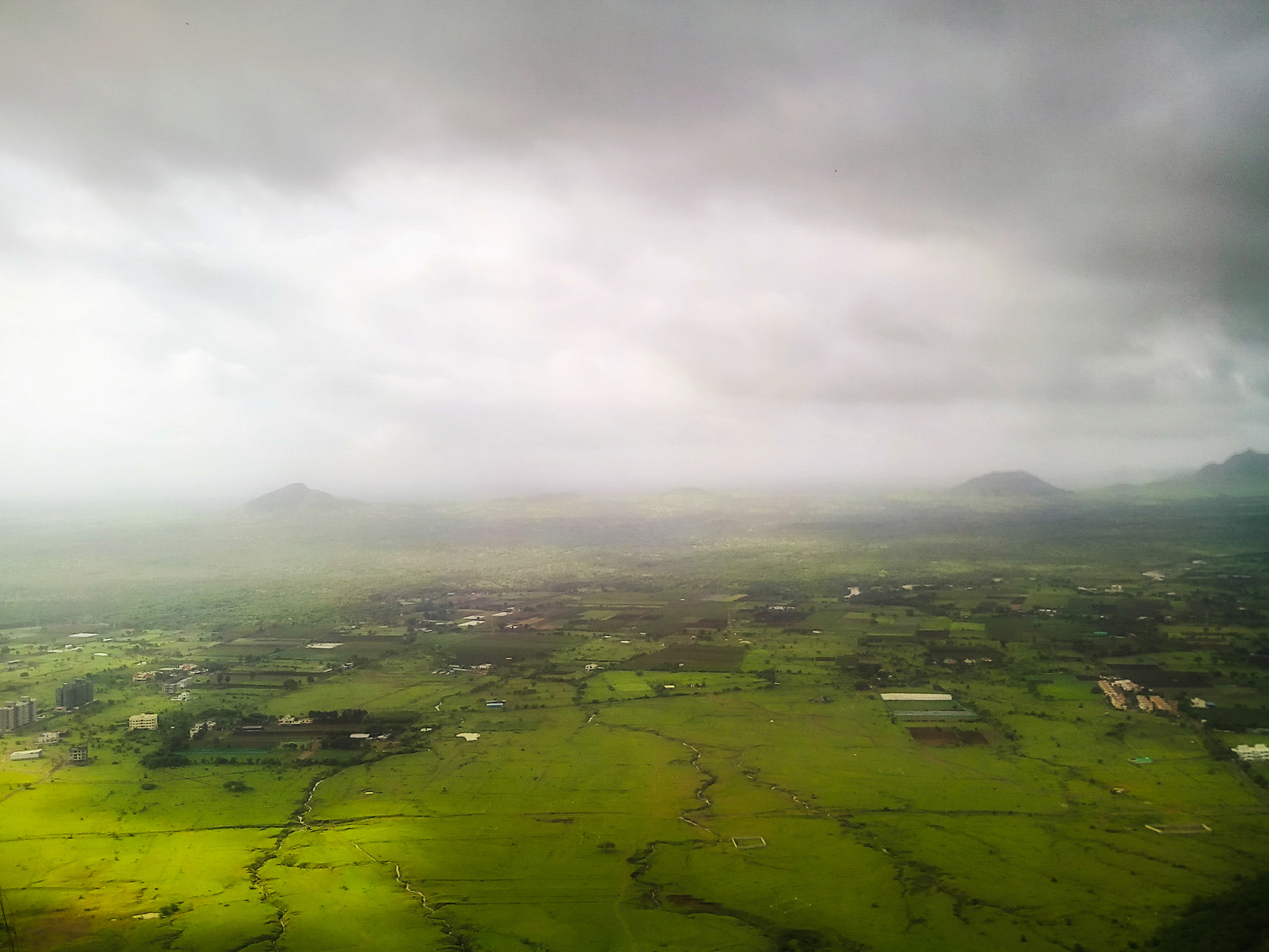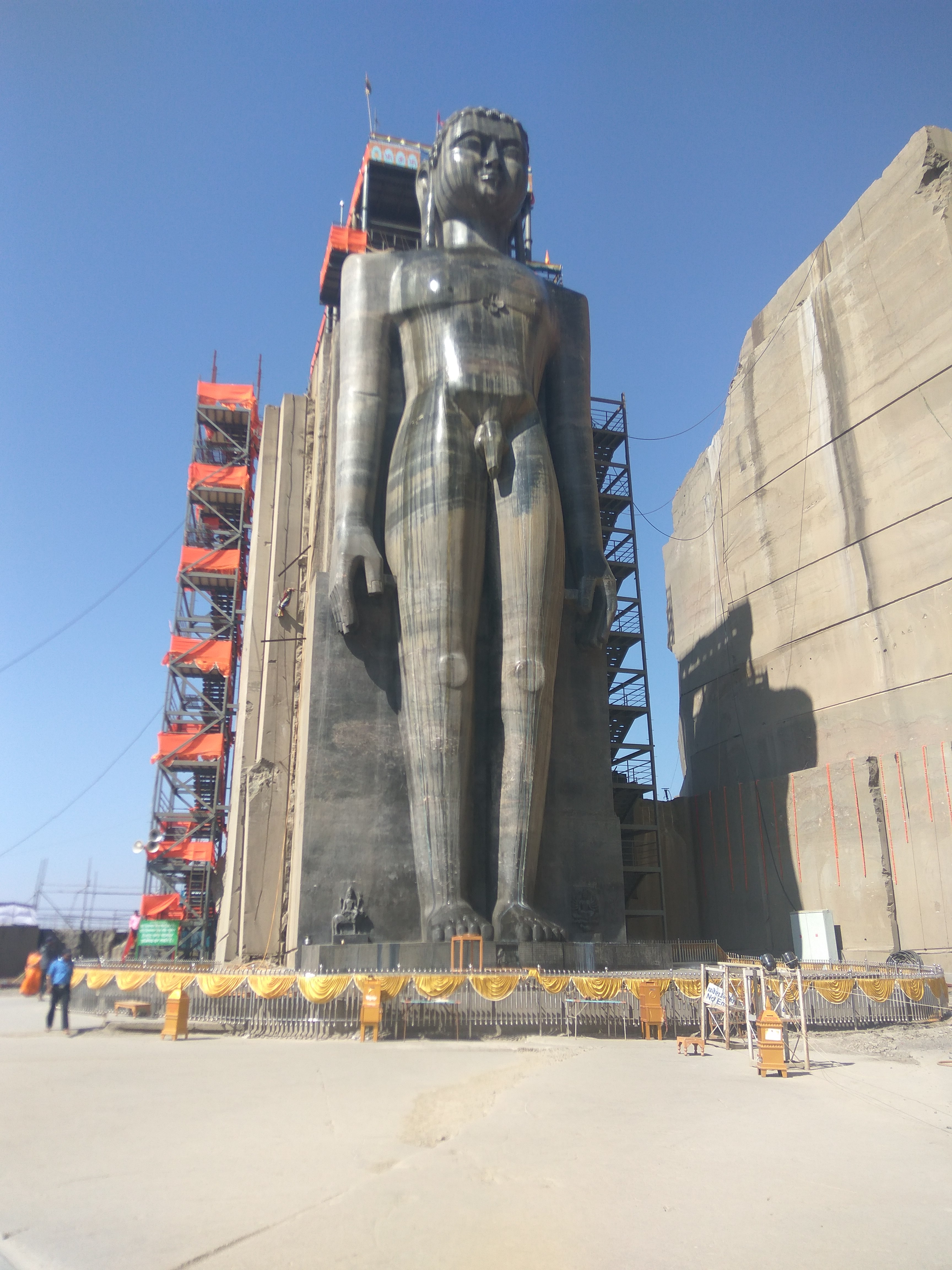|
Sri Pulumavi
Vasishthiputra Pulumavi (Brahmi: 𑀯𑀸𑀲𑀺𑀣𑀺𑀧𑀼𑀢 𑀧𑀼𑀎𑀼𑀫𑀸𑀯𑀺, ''Vāsiṭhiputa Puḷumāvi'', ) was a Satavahana king, and the son of Gautamiputra Satakarni. The new consensus for his reign is ca. 85-125 CE, although it was earlier dated variously: 110–138 CE or 130–159 CE. He is also referred to as Vasishthiputra Sri Pulumavi. Ptolemy, the second century writer, refers to Pulumavi as ''Siriptolemaios'', a contemporary of the Western satrap, Chastana. The capital of Sri Pulumavi is reported to have been at Paithan. Coinage Some of the lead coins of Pulumavi depict two-masted Indian ships, a testimony to the seafaring and trading capabilities of the Satavahanas during the 1st-2nd century CE. During his rule, Gautami Balasri, the mother of Gautamiputra Satakarni, laid an inscription at Nashik. Pulumavi was succeeded by his younger brother Vashishtiputra Satakarni. File:Vashishthiputra Shri Pulumavi.jpg, File:Indian ship on lead coin o ... [...More Info...] [...Related Items...] OR: [Wikipedia] [Google] [Baidu] |
Satavahanas
The Satavahanas (''Sādavāhana'' or ''Sātavāhana'', International Alphabet of Sanskrit Transliteration, IAST: ), also referred to as the Andhras in the Puranas, were an ancient Indian dynasty based in the Deccan Plateau, Deccan region. Most modern scholars believe that the Satavahana rule began in the late second century BCE and lasted until the early third century CE, although some assign the beginning of their rule to as early as the 3rd century BCE based on the Puranas, but uncorroborated by archaeological evidence. The Satavahana kingdom mainly comprised the present-day Andhra Pradesh, Telangana, and Maharashtra. At different times, their rule extended to parts of modern Gujarat, Madhya Pradesh, and Karnataka. The dynasty had different capital cities at different times, including Pratishthana (Paithan) and Amaravathi village, Guntur district, Amaravati (Dharanikota). The origin of the dynasty is uncertain, but according to the Puranas, their first king overthrew the Kan ... [...More Info...] [...Related Items...] OR: [Wikipedia] [Google] [Baidu] |
Western Satrap
The Western Satraps, or Western Kshatrapas (Brahmi:, ''Mahakṣatrapa'', "Great Satraps") were Indo-Scythian (Saka) rulers of the western and central part of India (Saurashtra (region), Saurashtra and Malwa: modern Gujarat, Maharashtra, Rajasthan and Madhya Pradesh states), between 35 to 415 CE. The Western Satraps were contemporaneous with the Kushans who ruled the northern part of the Indian subcontinent, and were possibly vassals of the Kushans. They were also contemporaneous with the Satavahana (Andhra in Indian epic literature, Andhra) who ruled in Central India. They are called "Western Satraps" in modern historiography in order to differentiate them from the "Northern Satraps", who ruled in Punjab and Mathura until the 2nd century CE. The power of the Western Satraps started to decline in the 2nd century CE after the Saka rulers were defeated by the Emperor Gautamiputra Satakarni of the Satavahana dynasty. After this, the Saka kingdom revived, but was ultimately destroyed ... [...More Info...] [...Related Items...] OR: [Wikipedia] [Google] [Baidu] |
Karla Caves
The Karla Caves, Karli Caves, Karle Caves or Karla Cells, are a complex of ancient Buddhist Indian rock-cut caves at Karli near Lonavala, Maharashtra. It is just 10.9 Kilometers away from Lonavala. Other caves in the area are Bhaja Caves, Patan Buddhist Cave, Bedse Caves and Nasik Caves. The shrines were developed over the period – from the 2nd century BCE to the 5th century CE. The oldest of the cave shrines is believed to date back to 160 BCE, having arisen near a major ancient trade route, running eastward from the Arabian Sea into the Deccan. The group at Karla is one of the older and smaller of the many rock-cut Buddhist sites in Maharashtra, but is one of the best-known because of the famous "Grand Chaitya" (Cave 8), which is the largest and most completely preserved" chaitya hall of the period, as well as containing unusual quantities of fine sculpture, much of it on a large scale. Many traders, Western Satraps of Saka origin and Satavahana rulers made grant ... [...More Info...] [...Related Items...] OR: [Wikipedia] [Google] [Baidu] |
Bhikshu
A ''bhikkhu'' (Pali: भिक्खु, Sanskrit: भिक्षु, ''bhikṣu'') is an ordained male in Buddhist monasticism. Male and female monastics ("nun", ''bhikkhunī'', Sanskrit ''bhikṣuṇī'') are members of the Sangha (Buddhist community). The lives of all Buddhist monastics are governed by a set of rules called the prātimokṣa or pātimokkha. Their lifestyles are shaped to support their spiritual practice: to live a simple and meditative life and attain nirvana. A person under the age of 20 cannot be ordained as a bhikkhu or bhikkhuni but can be ordained as a śrāmaṇera or śrāmaṇērī. Definition ''Bhikkhu'' literally means "beggar" or "one who lives by alms". The historical Buddha, Prince Siddhartha, having abandoned a life of pleasure and status, lived as an alms mendicant as part of his śramaṇa lifestyle. Those of his more serious students who renounced their lives as householders and came to study full-time under his supervision also adopted ... [...More Info...] [...Related Items...] OR: [Wikipedia] [Google] [Baidu] |
Nasik Inscription No3
Nashik (, Marathi: aːʃik, also called as Nasik ) is a city in the northern region of the Indian state of Maharashtra. Situated on the banks of river Godavari, Nashik is the third largest city in Maharashtra, after Mumbai and Pune. Nashik is well known for being one of the Hindu pilgrimage sites of the Kumbh Mela, which is held every 12 years. Nashik is located about 190 km north of state capital Mumbai. The city is called the "Wine Capital of India" as more than half of India's vineyards and wineries are located here. Around 90% of all Indian wine comes from the Nashik Valley. Nashik is one of the fastest-growing cities in India. It has been a major industrial center in automobile hub. The city houses companies like Exxelia, Atlas Copco, Robert Bosch GmbH, CEAT Limited, Crompton Greaves, Graphite India, ThyssenKrupp, Epcos, Everest Industries, Gabriel India, GlaxoSmithKline, Hindustan Coca-Cola, Hindustan Unilever Limited, Jindal Polyster, Jyoti Structures, Kirlosk ... [...More Info...] [...Related Items...] OR: [Wikipedia] [Google] [Baidu] |
Dvarapala
A Dvarapala or Dvarapalaka (Sanskrit, "door guard"; IAST: ' ) is a door or gate guardian often portrayed as a warrior or fearsome giant, usually armed with a weapon - the most common being the ''gada'' (mace). The dvarapala statue is a widespread architectural element throughout Hindu, Buddhist and Jaina cultures, as well as in areas influenced by them like Java. Names In most Southeast Asian languages (including Thai, Burmese, Vietnamese, Khmer and Javanese), these protective figures are referred to as ''dvarapala''. Sanskrit ''dvāra'' means "gate" or "door", and ''pāla'' means "guard" or "protector". The related name in Indonesian and Malaysia is ''dwarapala''. Equivalent door guardians in northern Asian languages are ''Kongōrikishi'' or ''Niō'' in Japanese, ''Heng Ha Er Jiang'' in Chinese, and ''Narayeongeumgang'' in Korean. Origin and forms Dvarapalas as an architectural feature have their origin in tutelary deities, like Yaksha and warrior figures, such as A ... [...More Info...] [...Related Items...] OR: [Wikipedia] [Google] [Baidu] |
Sri Pulumavi
Vasishthiputra Pulumavi (Brahmi: 𑀯𑀸𑀲𑀺𑀣𑀺𑀧𑀼𑀢 𑀧𑀼𑀎𑀼𑀫𑀸𑀯𑀺, ''Vāsiṭhiputa Puḷumāvi'', ) was a Satavahana king, and the son of Gautamiputra Satakarni. The new consensus for his reign is ca. 85-125 CE, although it was earlier dated variously: 110–138 CE or 130–159 CE. He is also referred to as Vasishthiputra Sri Pulumavi. Ptolemy, the second century writer, refers to Pulumavi as ''Siriptolemaios'', a contemporary of the Western satrap, Chastana. The capital of Sri Pulumavi is reported to have been at Paithan. Coinage Some of the lead coins of Pulumavi depict two-masted Indian ships, a testimony to the seafaring and trading capabilities of the Satavahanas during the 1st-2nd century CE. During his rule, Gautami Balasri, the mother of Gautamiputra Satakarni, laid an inscription at Nashik. Pulumavi was succeeded by his younger brother Vashishtiputra Satakarni. File:Vashishthiputra Shri Pulumavi.jpg, File:Indian ship on lead coin o ... [...More Info...] [...Related Items...] OR: [Wikipedia] [Google] [Baidu] |
Samgha
Sangha is a Sanskrit word used in many Indian languages, including Pali meaning "association", "assembly", "company" or "community"; Sangha is often used as a surname across these languages. It was historically used in a political context to denote a governing assembly in a republic or a kingdom, and has long been used by religious associations including the Buddhists, Jains and Sikhs. Given this history, some Buddhists have said the tradition of the ''sangha'' represents humanity's oldest surviving democratic institution. In Buddhism, ''sangha'' refers to the monastic community of ''bhikkhu'' (monks) and '' bhikkhuni'' (nuns). These communities are traditionally referred to as the ''bhikkhu-sangha'' or ''bhikkhuni-sangha''. As a separate category, those who have attained any of the four stages of enlightenment, whether or not they are members of the monastic community, are referred to as the ''āryasaṅgha'' ("noble Sangha"). According to the Theravada school and Nichir ... [...More Info...] [...Related Items...] OR: [Wikipedia] [Google] [Baidu] |
Pandavleni Caves
The Nasik Caves, or Trirashmi Leni (''Trirashmi'' being the name of the hills in which the caves are located, ''Leni'' being a Marathi word for caves), are a group of 23 caves carved between the 1st century BCE and the 3rd century CE, though additional sculptures were added up to about the 6th century, reflecting changes in Buddhist devotional practices.Michell, 384 The Buddhist sculptures are a significant group of early examples of Indian rock-cut architecture initially representing the Early Buddhist schools tradition. Most of the caves are viharas except for Cave 18 which is a chaitya of the 1st century BCE. The style of some of the elaborate pillars or columns, for example in caves 3 and 10, is an important example of the development of the form. The location of the caves is a holy Buddhist site and is located about 8 km south of the centre of Nashik (or Nasik), Maharashtra, India. The Pandavleni name sometimes given to the Nasik Caves has nothing to do with the Pa ... [...More Info...] [...Related Items...] OR: [Wikipedia] [Google] [Baidu] |
Nashik
Nashik (, Marathi: aːʃik, also called as Nasik ) is a city in the northern region of the Indian state of Maharashtra. Situated on the banks of river Godavari, Nashik is the third largest city in Maharashtra, after Mumbai and Pune. Nashik is well known for being one of the Hindu pilgrimage sites of the Kumbh Mela, which is held every 12 years. Nashik is located about 190 km north of state capital Mumbai. The city is called the "Wine Capital of India" as more than half of India's vineyards and wineries are located here. Around 90% of all Indian wine comes from the Nashik Valley. Nashik is one of the fastest-growing cities in India. It has been a major industrial center in automobile hub. The city houses companies like Exxelia, Atlas Copco, Robert Bosch GmbH, CEAT Limited, Crompton Greaves, Graphite India, ThyssenKrupp, Epcos, Everest Industries, Gabriel India, GlaxoSmithKline, Hindustan Coca-Cola, Hindustan Unilever Limited, Jindal Polyster, Jyoti Structures, Kirl ... [...More Info...] [...Related Items...] OR: [Wikipedia] [Google] [Baidu] |
Inner Traditions
Interior may refer to: Arts and media * ''Interior'' (Degas) (also known as ''The Rape''), painting by Edgar Degas * ''Interior'' (play), 1895 play by Belgian playwright Maurice Maeterlinck * ''The Interior'' (novel), by Lisa See * Interior design, the trade of designing an architectural interior Places * Interior, South Dakota * Interior, Washington * Interior Township, Michigan * British Columbia Interior, commonly known as "The Interior" Government agencies * Interior ministry, sometimes called the ministry of home affairs * United States Department of the Interior Other uses * Interior (topology), mathematical concept that includes, for example, the inside of a shape * Interior FC, a football team in Gambia See also * * * List of geographic interiors * Interiors (other) * Inter (other) * Inside (other) Inside may refer to: * Insider, a member of any group of people of limited number and generally restricted access Film * ''In ... [...More Info...] [...Related Items...] OR: [Wikipedia] [Google] [Baidu] |









